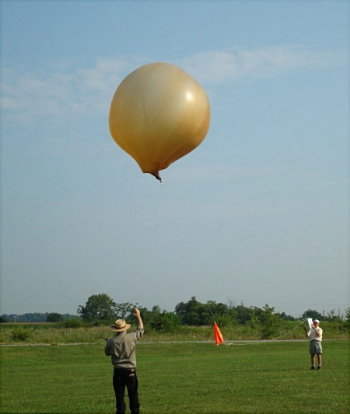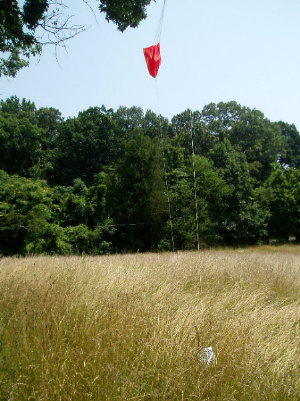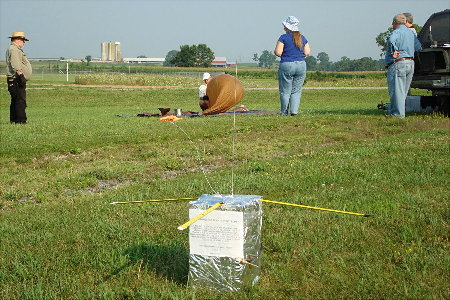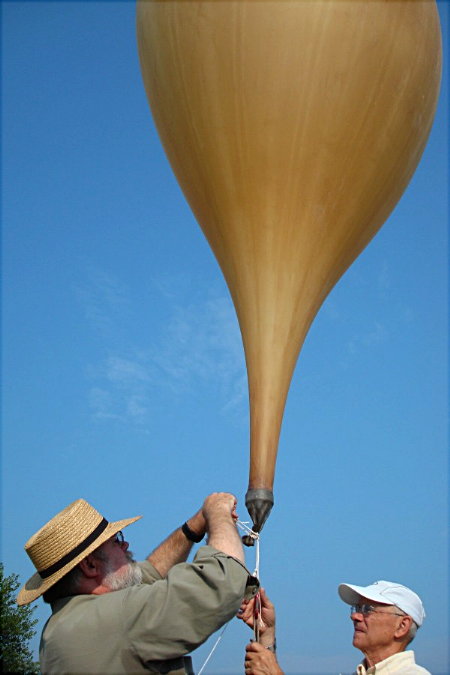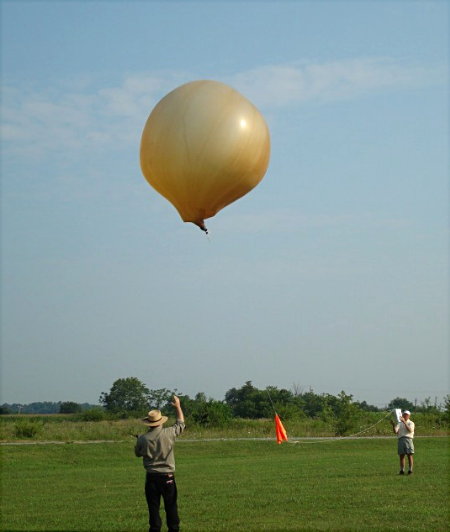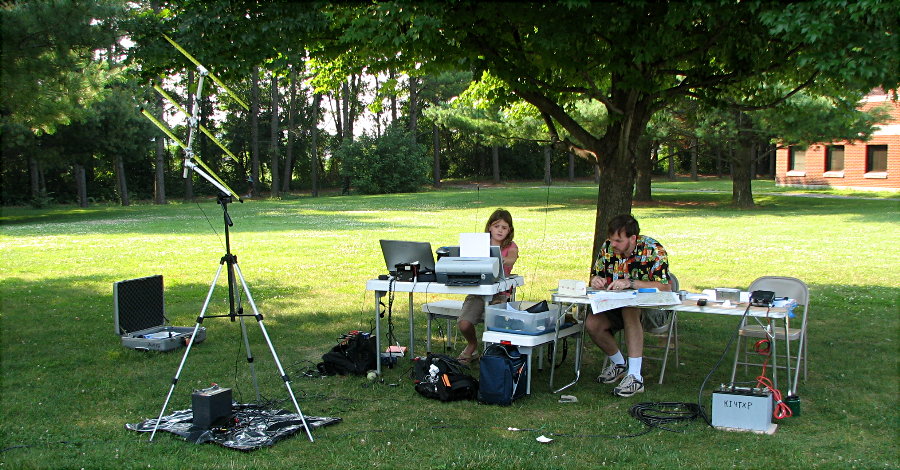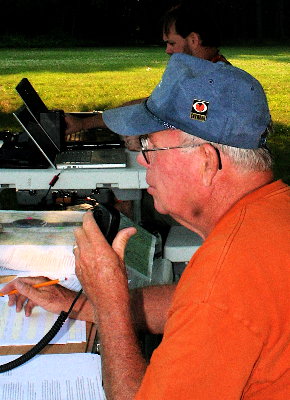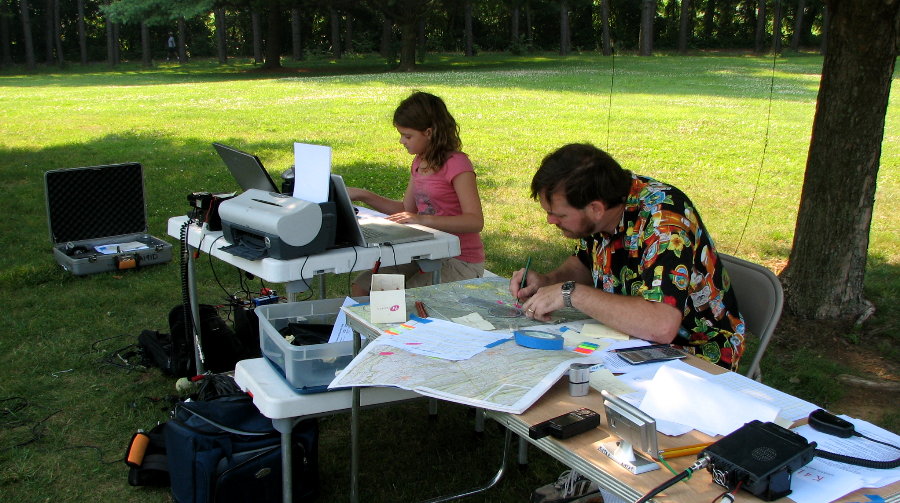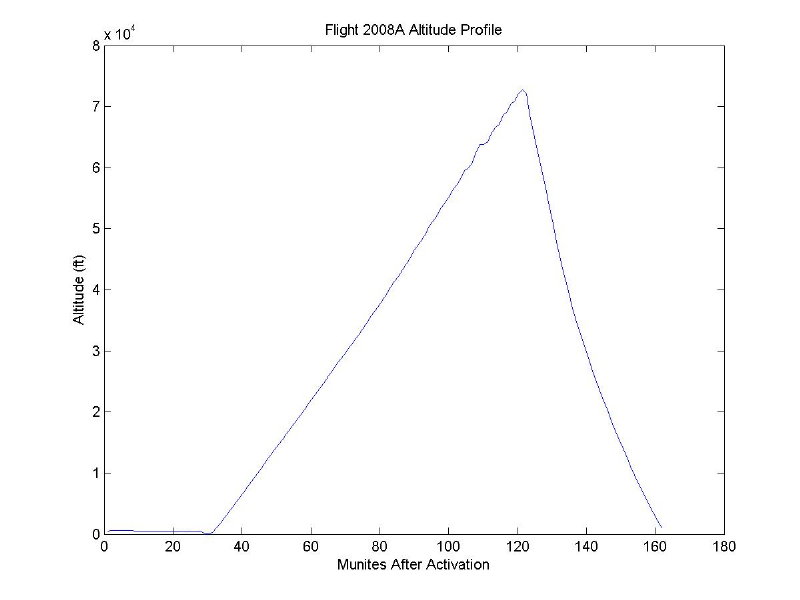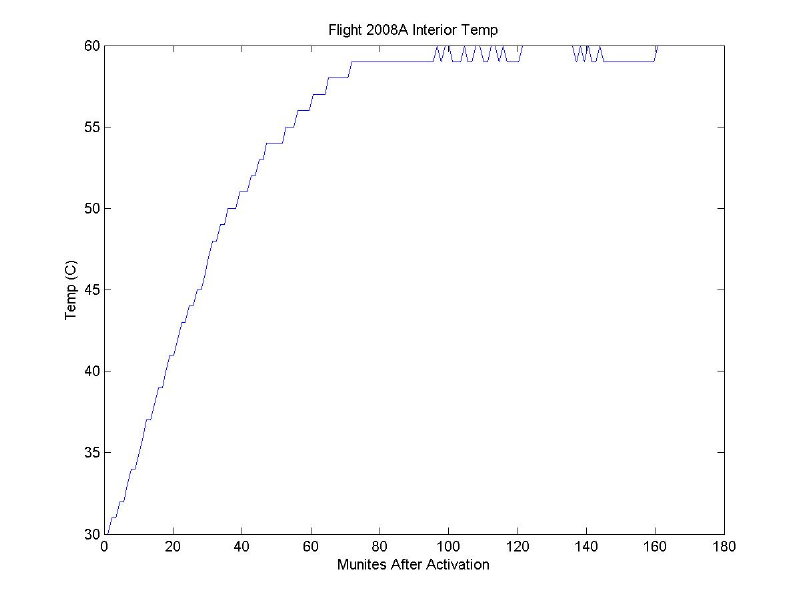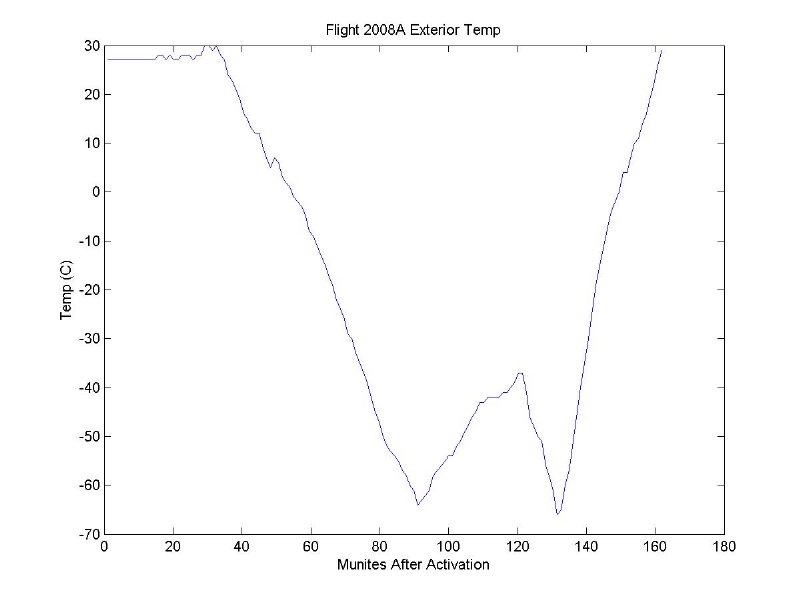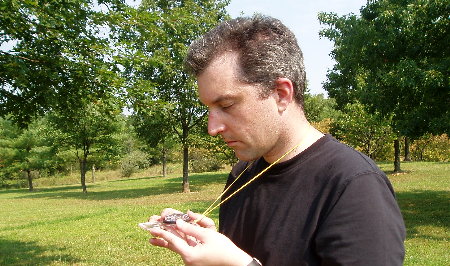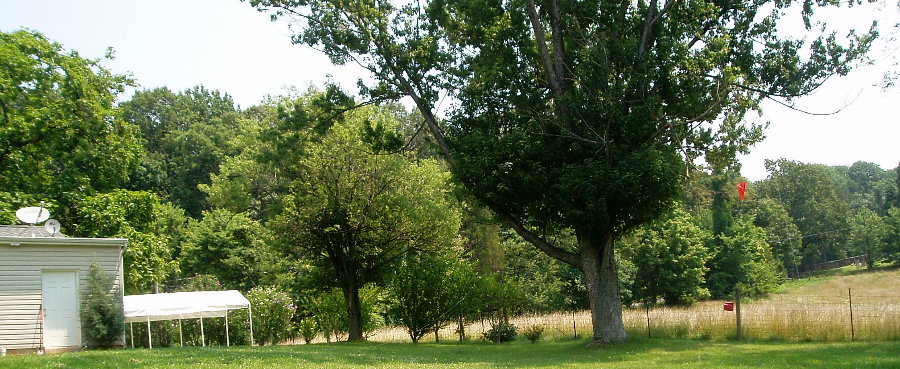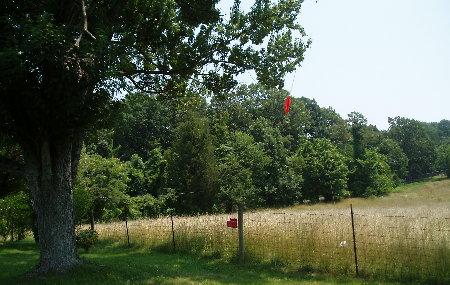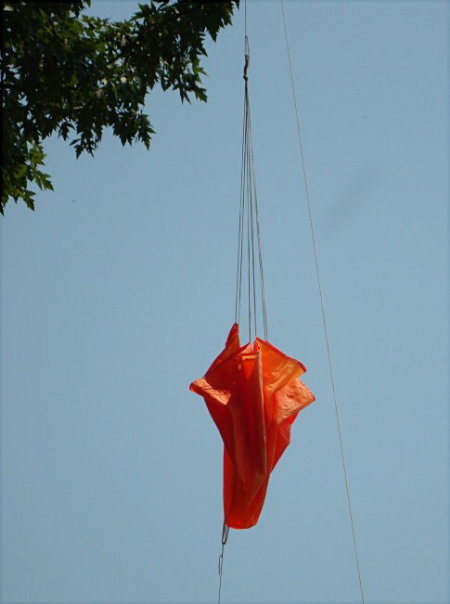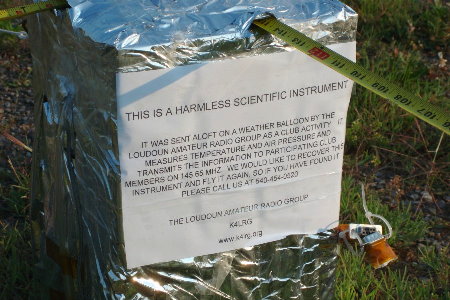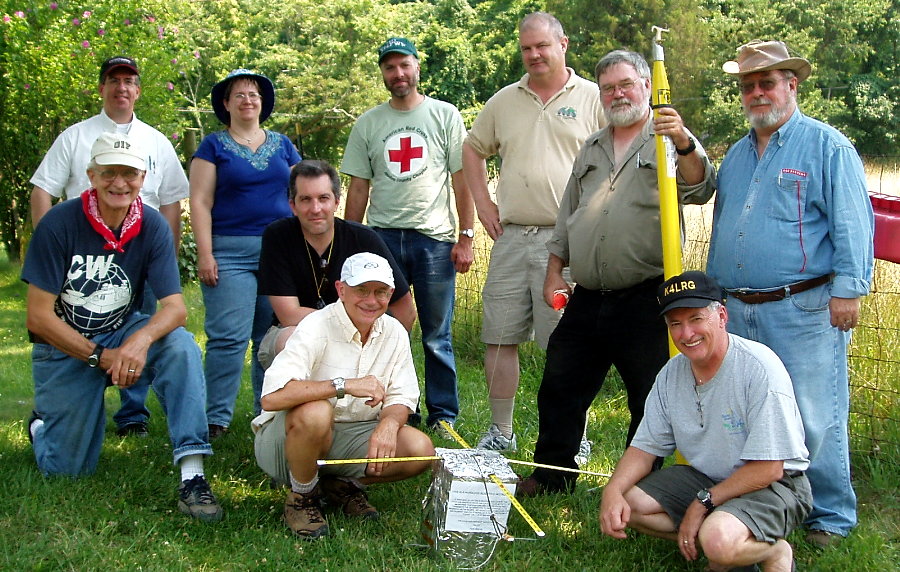|
(Leesburg, Virginia – July 22, 2008) Mission Control (MC) came into existence during the Sunday night net one week before launch and was looking like a one-man team until Wednesday when KI4TXP Jay volunteered. Without Jay, Mission Control likely would have been merely a relay station of bearings and altitudes. Instead, Jay became the key communications element of a team that became increasingly proficient as the flight progressed.
Mission Control's first activity was securing permission to use the 147.300+ Bluemont repeater. Not only was this quickly provided by Wes Boxwell through Chad Rudolph, the control op, but Chad also volunteered to stick around and place the repeater into and out of net mode. This turned out to be a very welcome resource as the frequency was very busy with balloon operations on flight day, and the presence of a single frequency for operation in Loudoun, Clarke, and other counties was a big relief. This was not fully realized until the station locations were plotted, and it was realized that neither simplex nor the other repeaters probably could have been used without a bunch of relays.
Permission to use Clarke County Park was then requested and secured. This site was chosen since Berryville was the originally intended landing zone. Getting permission was a good idea since we were questioned by a friendly caretaker while setting up, and having the name of the Parks reservation person was the magic ticket. It turned out to be a fabulous site and we'd recommend it for future balloon events: large shade trees near our vehicles to set up under, not much traffic or noise, relatively good altitude in the valley, able to obtain the balloon signal prior to launch, ability to set up pretty early in the morning, large playground and swimming pool for the family, nearby restrooms, food in town, etc etc.
Prior to the event, Mission Control then made three announcements about the launch on the NVTN on Tuesday, Thursday, and Friday. This raised local awareness of the event and is responsible for a couple of signal reports that helped Mission Control estimate the balloon's location after landing.
The only remaining concern was how things would play out on launch day. Neither Jay nor Sean had participated in a ballooning event at this level, so during a long phone call, they walked through the entire procedures document, played out the flight, and wrote down a number of questions for the pros. The email reflector turned out to be a great asset in getting answers to those questions.
The day before launch, Sean's daughters decided that they wanted to come along and help. Sean decided to put them to work collecting altitude information, which meant that a telemetry station had to be cobbled together. Using the modifications suggested by Denny KF4TJI during the March LARG meeting, a tape measure beam was rebuilt and mounted onto a camera tripod. An FT-530 (a wonderful early 90s HT produced by Yaesu) was employed as the receiver with a preamplifier. CWGET was used to decode the CW and Tom's baro-to-altitude chart was used to provide altitude information. This gave Mission Control the ability to monitor the package telemetry from before launch to just before landing.
On launch day, the team fell into the roles of Communications, Plotting, and Altitude Reporting. Jay, a veteran net control, handled this role beautifully, keeping the net together under pressure from both sides of the microphone. Sean handled plotting, reading position reports copied by Jay and providing estimates of balloon position to Jay for transmission. Cassandra copied telemetry from CWGET into a paper log, while Samantha converted baro readings to altitude and reported them to Jay.
The entire team was new to their roles, and for the first half of the flight there was a lot of scurrying while we learned the ropes. But by the second half, we had time to drink our (now cold) coffee, visit the bathroom, and prepare for LOS.
People have asked how Mission Control arrived at a pretty good estimate of the balloon location, and we think it reflects the teamwork within Mission Control, the trackers, LARG members, and others who heard our signal and contributed. Everybody did his or her job well and interacted efficiently with everyone else. By looking at the map the plotting station was able to tell which stations were positioned to give the best signal reports for different portions of the balloon flight. The altitude station gave us current and timely information that let us prepare for LOS. The communications station kept information flowing between the net and the other two stations.
And after LOS, we all simply were fortunate to have the package land where it did, and have some excellent fixes provided by stations that had not yet contributed. Upon LOS, Mission Control estimated the package to be within five miles of Hillsboro, based on LOS times and final tracking station bearings. But it was three Loudoun stations that reported afterwards who provided the bearings that led to the updated position of an area three miles southeast of Lovettsville. One station used the "body attenuation" method that provided even more assurance that the package was in this quadrant.
Once it was clear that multiple stations were receiving the signal, Mission Control was requested to return to Loudoun to participate in the imminent recovery. But just as we started packing, one of the Loudoun stations provided an updated bearing, that the plotting station penciled in, and with a quick decision, deemed that with so many stations already hearing the signal, an updated location was not required.
The package was finally located just inside a three mile radius from the last position we provided over the air. After the lunch celebration, the ride home, and a long-needed nap, the plotting lead opened up the map to examine the final fixes. It turned out that the corrected bearing had placed the balloon in a small area centered on top of Taylorstown!
Observations on the Flight from 'DEBRIEF to AI2C' of Mission Control Team Chief
(Leesburg, Virginia – July 20, 2008) Jay did such a great job handling the net and copying position reports so I just looked over his shoulder. I would copy down a set of readings on a post-it using a different color for each station, then plot it.
I took flight training in 2002 and 2003 and plotting was one of the training points but I was not proficient. It was rough at first but after the first half dozen readings I started to have faith in the process and it came together in my head.
The LOS timing thing was great. Based on these I first figured you had an extra long receive because you were peering through a gap into Hillsboro between those two parallel ranges. (Here it really helped knowing the terrain from flying over it during flight training!) KG4RRN's LOS was a big hint that it did not go as far as Lovettsville and the tracks provided by Loudoun stations did not support it.
I started to hone in on the area 3 miles southeast of Lovettsville from three readings from hams in the area. The ham in Lovettsville who used the "HT against the body" technique and reported ESE confirmed it was south and east of Lovettsville but I wondered why it was not SE. (As we know it indeed was ESE.) Then one of the hams in the area who had given a report that created a triangle in the area I reported, updated his report. At that time we got the call to come in and not miss the fun, and I did not put much more thought into it. I wish I had, though, because looking back at his update (I wish I had erased his old track) his track and the track from two other stations converged (I am pretty sure, I have not completely plotted this) right on top of Taylorstown! I sure wish I had noticed and reported that.
I was using a tape measure beam at MC that was doing a great job on the telemetry and the girls were in charge of copying altitude readings from CWGET and converting Baro to Altitude which they did like champs, esp. at the end. I had no attenuator and I had just fixed up the beam last night and had never checked it out and it was my first beam so I had no idea how well it worked etc. The back lobe null was not doing much for me. But at LOS I was sure I had the bearing nailed because in the final two telemetry readings I finally got the required attenuation from the signal itself and was getting a sharp drop-off just a few degrees in either direction. I had to switch maps to better plot the Loudoun station position reports and did not copy our own LOS bearing onto that map. After getting home I was dying to see how close it was, I was so certain I had nailed it. Turns out that I had not in fact nailed it but that it was pointing directly at Snickers Gap! Clearly, the low spot and cleared trees provided for a great reflection from the balloon. I actually had noticed a peak in the direction in the last half hour of the flight and was wondering why because your report and others put the balloon further north. Does this correlate to your DF'ing experience?
Best Regards, Sean - AI4ID
|
